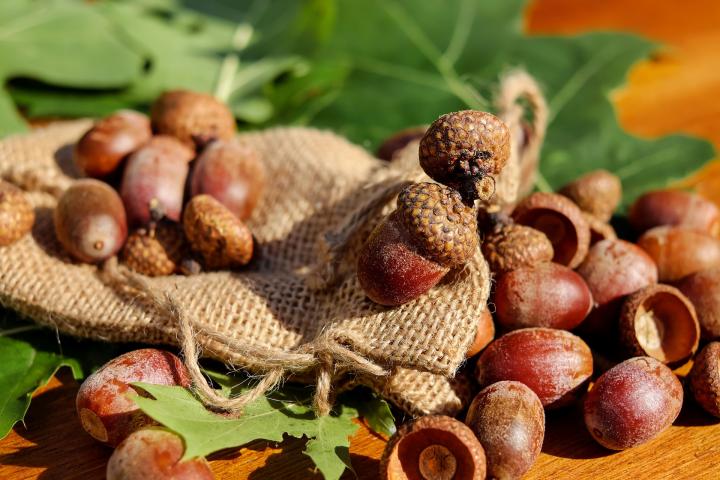
A Step-by-Step Guide to Preparing and Cooking with Acorns
ADVERTISEMENT
We used to rake leaves and burn them, basically roasting the acorns in the fire until afternoon, then sit around and eat them afterward.
I have been boiling the acorns for several hours, rotating between pots to keep using fresh water. The water still turns brown after several minutes. How long should I keep doing it?
Hi there!
After several hours of repeating that process, you should be all set. Even if the water is still turning brown, you should have removed enough of the tannins that it won’t be bitter tasting anymore. We hope this helps!
Same deal here, I changed water every 15 minutes for about 2.5 hrs. Tasted a fragment...pretty bland, so I stopped.
Drained, cooled, and put them in the oven with some salt. Tasted a piece after about 30 minutes. Its not bitter...its not anything. These are huge acorns, from a burr oak, some of these nutmeats are the size of a small walnut. Presuming these are done in 30 more minutes, can I expect anything more than a bland flavor once these are cooked all the way?
My dogs and pigs have been eating acorns that have fallen on the ground. Is this OK? I heard that it cac damage their kidneys
Yes acorns are a no-no for dogs as I read it. The kidneys must work overtime to eliminate the tannin from their system and 6% or less of their body weight in acorns will cause the kidneys to shut down and thus death. I work overtime pulling acorns from the mouth of my two Lab puppies as they love to chew and swallow them.
Also, the shells can make shards which will damage their insides and are a bad size to cause bowel blockage especially on small dogs or pups.
We already reduce habitat, and share little of our fruit and vegetable gardens with wildlife. Can we at least leave them the acorns? Many depend on them to get through the months when no other food is available.
Hey There, I appreciate your care for the critters... you're right Humans are destroying their lives and therefore our own at the same time.
There are plenty of places where there are hundreds of pounds of acorns and hardly a critter about. In fact the lawns in these public parks/gardens are [usually] regularly mowed and all the acorns discarded wherever those clippings go. I'm writing from NZ and the only wild animals likely to want these acorns are possums [a pest in NZ] and maybe the odd hedgehog (I don't even know if they eat acorns). These parks are in the middle of the city or by a rugby field or a children's playground in a rural township. I'll collect some when, I beat the mowers, guilt free, but I'll certainly consider the critters in wilder places. Thank you.
Good point if you’re in an area without many acorns. However, don’t worry if you happen to own oak trees. Most areas with acorns have more than enough for the animal life, including a human or two. One huge oak can drop up to 10,000 acorns. If you own oaks, the acorns can blanket the ground in a mast year. Fortunately, the United States is blessed with roughly 58 species of native oaks. The best thing you can do if you have oaks on your property to increase yield is manage them. Keep any oaks and other nut trees thinned and healthy. Crowded stands of tall trees block the sun and squelch mast production. Nut trees with crowns fully exposed to light are healthier and produce better than those with shaded foliage. Thin medium-height trees, too, so light can strike the ground and encourage growth of lower foliage important to ground-dwelling creatures for cover and nesting.
my wife is taking them out of the shell cutting them up into smaller pieces then she is putting them in our dehydrator. I told her that she should soak them in water to get rid of the tannin out of them first who is right or does it matter









